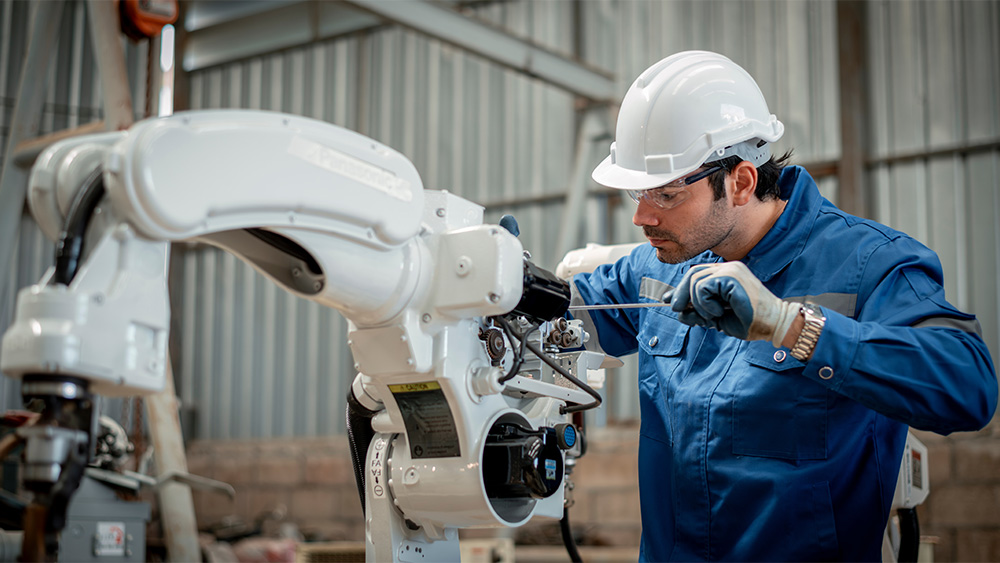Adobe Stock
Automation provides opportunities for new, more efficient workflows and better resource use in manufacturing. Despite a long history of fears concerning job losses brought on by automation, these anxieties aren’t typically reflected in reality.
|
ADVERTISEMENT |
To learn more about the best ways to upskill workers while adopting automation, engineering.com spoke to Samuel Bouchard, CEO of Robotiq, which makes end effectors and accessories for Universal Robots and specializes in the deployment of collaborative robots.
While it’s tempting for laypeople to succumb to the idea of robots “taking jobs” from their human counterparts, Bouchard believes this isn’t a prevailing belief in industry. “The reason is that everybody is super busy and looking for more people,” says Bouchard.
However, in Robotiq’s experience, workers may still have some uncertainty about how robots will affect their jobs. “Workers know that they will be needed at other places in the factory, but they don't know really what that means until they get the first project going. And then it totally changes.”
According to Bouchard, once workers see robots in action, they begin to appreciate the role they play in taking on repetitive, less interesting tasks.
…

Add new comment